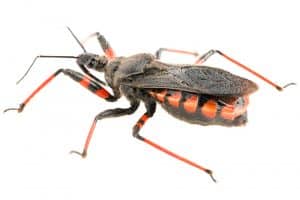Halloween and horror movies are filled with creatures designed to strike fear in the hearts of viewers—from those that drink blood in the night to insects that grow too large and develop a taste for human flesh and aliens that cross the universe intent on the destruction of humanity. But is there any truth behind any of these fantastical creatures? Turns out, the answer is yes, though the real deal is much more nuanced—and much more intriguing—than their Hollywood doppelgangers.

Yes, though bugs are deadlier than you might think—the mosquito is the world’s deadliest animal. But the insects in horror movies—or that sound like they belong in horror movies—are actually much less scary than their name or image implies. Rich Hofstetter, director of the Insect Ecology and Management Lab in the School of Forestry, spends his days studying bugs. Much of his work focuses on insects like bark beetles and oystershell scale, which are deadly to the forests surrounding Flagstaff. We asked about those insects that are a little creepier.
One such creepy-crawly in northern Arizona—the tarantula hawk wasp. We’ve all seen a tarantula or two out on the trails (more on tarantulas and the fact that they like to hide in shoes), but, despite their scary appearance, they’re actually the prey/host in an unpleasant-sounding parasitic relationship with the tarantula hawk wasp. A female wasp will track down a tarantula burrow, coax the spider out, sting it, thus paralyzing it, then laying an egg on the immobile spider. When the egg hatches, the baby wasp eats the still-living(!) spider. Learn more from the Arizona-Sonora Desert Museum. There are a lot of these in Arizona, Hofstetter said. The good news, reader? Unless you’re a tarantula, you’re probably fine. The bad news? Provoke a tarantula hawk wasp at your peril; they have one of the most painful stings on the planet.
Now, about this assassin bug. (Look at this picture with caution—it’s not NSFW but it is horrifying.) Hofstetter said the assassin bug, true to

its name, is a predatory insect of many other insects, especially caterpillars. They are not that harmful to humans but can give a painful bite, i.e. poke with their “beak.” But at least its bite won’t decapitate you, unlike its smaller prey. Ironically, assassin bugs are largely beneficial to humans because they eat other bugs. There is an exception …
Fun(?) fact: The so-called kissing bug is a type of assassin bug that sucks blood from the faces of its victims. Yes, they live in Arizona. Yes, they can feed on humans. Yes, that does feel straight from a horror movie.


